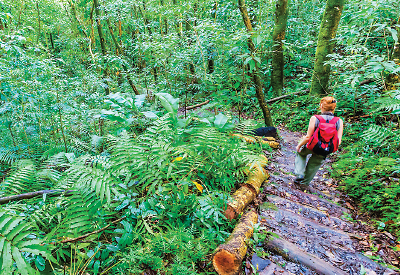Healing the Mind With Nature: Another Tool for Psychiatry
Abstract
Psychiatrists may want to consider prescribing “green” or “natural” therapies to harness patients’ healing power.
Brian Stafford, M.D., had a thriving psychiatric practice and academic career until five years ago when he decided that the “pathology-focused” approach he was taking no longer worked for him.

“Traditional psychiatric interventions focus on what’s wrong with you,” Stafford said. “I don’t want to simply help people function. I want to help them discover what’s magnificent about themselves.”
No longer a practicing psychiatrist, Stafford found what he was looking for in the growing field of eco-therapy (also called green or nature therapy) and now works in Ojai, Calif., helping individuals, retreat groups, and organizations, as well as other health care professionals, get in touch with their inner naturalist through Eco-Psyche-Artistry and the Animas Valley Institute.
Stafford has found that traditionally educated psychiatrists (as he was, with a medical degree from Tulane University) are often skeptical of approaches in which they have not been trained or for which there is not ample scientific evidence. And while Stafford acknowledged that the evidence for the benefits of eco-therapy is still minimal by conventional medical standards, it has been growing since the term was first coined by pastoral counselor Howard Clinebell in his 1996 book Ecotherapy: Healing Ourselves, Healing the Earth.
In a 2007 study from the University of Essex in the United Kingdom, for example, researchers reported that a walk in the country reduced depression in 71 percent of the participants. As little as five minutes a day in a natural setting, whether walking in a park or gardening in the backyard, improved mood, self-esteem, and motivation. Additional studies have been published in journals such as Psychological Science, Journal of Health Psychology, Journal of Alternative and Complementary Medicine, and Science and have demonstrated similar findings; children with attention-deficit disorder, for example, were found to be more relaxed and focused when they participated in outdoor activities, and hospital patients whose room faced a natural setting experienced less pain and less depression than patients whose room faced a brick wall.
In Japan and Germany, natural therapies are cornerstones of preventive medicine and healing. In the Japanese version of eco-therapy, shinrin-yoku (which means “taking in the forest” or “forest bathing”), patients take extended walks in forested areas. Research has shown that patients who do shinrin-yoku have lower blood pressure, pulse rates, and cortisol levels when compared with people who walked through urban areas. In Germany, Kneipp therapy similarly calls for patients to perform physical exercises in the forest.
Hospitals too should consider adding more natural elements, according to Massachusetts General resident physician Dhruv Khullar, M.D. In the February 22 New York Times, Khullar wrote that when it comes to hospital design, “the more nature, the better.” Khullar also noted that similar research has shown that patients with bipolar disorder whose rooms faced east had hospital stays nearly four days shorter than those whose rooms faced west. Another study reported that even images of nature can be beneficial, showing that psychiatric patients needed fewer medications for anxiety and agitation when photos of landscapes were hung on hospital walls instead of being left bare or hung with abstract art. Similarly, watching videos of nature appear to improve pain tolerance, lower heart rates and blood pressure, and invoke more positive emotions.
It’s not only the patients who benefit from a more natural environment, Khullar told Psychiatric News. Doctors too are affected by the small rooms, minimal natural lighting, and limited views of a natural landscape. “When you spend 12, 14, or 16 hours with no exposure to the outside world, it becomes problematic,” said Khullar. “It’s easy for us to become accustomed to that kind of environment and forget how most people live.”
As new hospitals are being built and older ones redesigned, more natural elements—from healing gardens to expansive windows—are being incorporated into the environment. But simply opening the blinds, adding more greenery to waiting rooms and public areas, and encouraging patients to get outside, if at all possible, is beneficial as well, according to Khullar, who subscribes to the theories set forth by Roger Ulrich, now a professor of architecture at the Center for Healthcare Building Research at Chalmers University of Technology in Sweden, who pioneered the study of health care design.
Both Stafford and Khullar are in agreement when it comes to incorporating nature into a therapeutic setting, be it a hospital or a physician’s office. If you can’t take your practice outside, you can at least add a plant and a small indoor fountain, they believe.
“We lose our individuality by focusing solely on neurotransmitters,” said Stafford. Khullar agreed. “We need to think about all the ways in which we can help heal, not just with medicine.” ■



